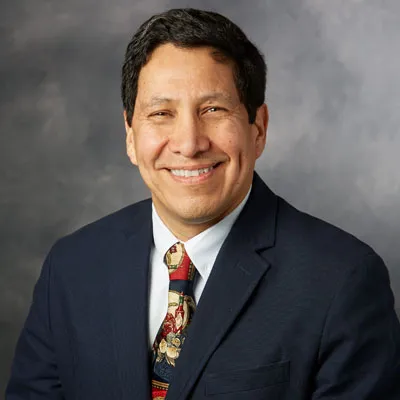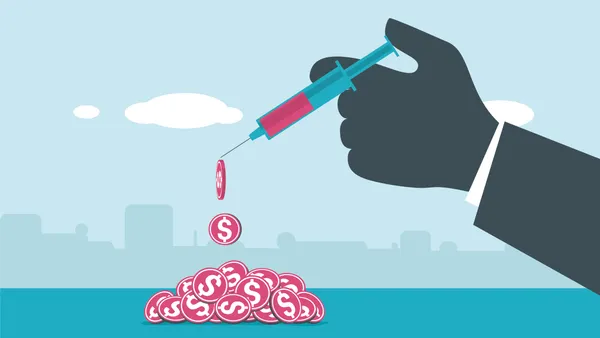Hundreds of patients have now flocked to Stanford Health Care’s long COVID-19 clinic in hopes of finding relief from the unusual symptoms that plague them.

More than 85% have fatigue, which can make it difficult or impossible to get through a normal day, said Dr. Hector Bonilla, co-director of Stanford Health Care’s Post-Acute COVID-19 Syndrome Clinic, which opened its doors in May 2021. They also report brain fog, sleep disturbances, or dysregulation of the autonomic nervous system, which can cause their body temperature to fluctuate, their heart to race, or cause them to faint when they stand up quickly. Some 30% to 40% of them have symptoms that are so severe, getting out of bed is a struggle, Bonilla said.
While COVID-19 is newer virus on the global stage, this strange constellation of symptoms are familiar to Bonilla, who has spent years working with chronic fatigue syndrome patients, also referred to sometimes as myalgic encephalomyelitis (ME),which affects as many as 2.5 million Americans.
Often, these patients also had a flu-like illness before their ME symptoms began, and experts suspect an infection may trigger the condition.
For decades, doctors around the world have noted sporadic outbreaks of ME/CFS-like illness in people who appeared healthy but who were experiencing debilitating symptoms such as unrelenting fatigue, muscle pain, sore lymph nodes and brain fog. Several viruses and infections have been linked to ME/CFS and other post-acute infection syndromes including Epstein-Barr virus, Ross River virus, and a bacterial infection, Coxiella burnetii, sometimes referred to as Q fever.
A cure for ME/CFS has been elusive, and while some patients improve, others never regain their normal function. But because of the similarities between these conditions and long COVID, which is garnering significant attention from the medical community, that may soon change.
In 2021 the federal government allocated $1.15 billion in discretionary funding to long-COVID research to better understand its causes and uncover better ways to treat it. But these efforts have yet to result in an active clinical trial for treatments. Now, researchers at Stanford hope they’re closing in on answers that will unravel the mysteries of all these conditions.
Lingering mysteries
Researchers still don’t know whether symptoms of long COVID will eventually disappear because not enough time has elapsed to fully understand its impacts. Experts also don’t know how many people are affected by the disorder and estimates vary between 5% and 30% of people who contract the virus. All told, it may affect as many as 65 million people worldwide.
The WHO defines long COVID as “development of new symptoms three months after the initial SARS-CoV-2 infection, with these symptoms lasting for at least two months with no other explanation.”
The condition is linked to more than 200-plus symptoms, and occurs both in people who had severe COVID-19 infections that required hospitalization and those only sick with mild or asymptomatic infections, Bonilla said.
One recent JAMA Internal Medicine study found that the condition is more common in women — roughly two thirds of those being treated at the Stanford clinic are female — as well as in people over age 40, smokers, and people with a body mass index in the obese range. Patients who have more severe COVID infections are also at higher risk, but not everyone who develops the condition has these risk factors or underlying health problems.
Around 85% of the patients treated at the Stanford clinic were never hospitalized for COVID, Bonilla said.
“Something interesting that we see is people who have mild COVID and they recover completely, but weeks later they develop symptoms that have been correlated with long COVID symptoms,” he said.
A lurking problem
Much like patients with ME/CFS, some long COVID patients are still treated with skepticism, largely because people with the condition don’t look sick.
“The patient looks good. The labs are normal, but the patient feels awful,” Bonilla said.
However, evidence increasingly suggests that while people with long COVID may appear healthy, it can have physical impacts. Studies have found that the SARS-CoV-2 virus can persist in the body long after the initial infection has cleared. Researchers from the National Institutes of Health performed autopsies on COVID-19 patients and detected the virus in 84 locations in the body for up to 230 days after infection. They also found signs that in some instances, the virus might continue to replicate for months.
"People who have mild COVID (can) recover completely, but weeks later develop symptoms that have been correlated with long COVID."

Dr. Hector Bonilla
Co-director, Stanford Health Care Post-Acute COVID-19 Syndrome Clinic
Although initially thought of as a respiratory virus, COVID can impact systems well beyond the respiratory tract, Bonilla said. In the acute phase it can move into the muscles, the brain, the heart, the endothelial cells that line blood and lymphatic vessels, the liver, the kidneys and the pancreas.
Researchers have also found differences in the immune systems of long-COVID patients and that they appear to remain on alert even after the initial viral threat has passed. Samples of fluid from the brain and spinal cord of people with long COVID document changes in the number and function of certain immune cells, too.
“Some people have B-cell activation, memory T cells decline, (and) there’s an increase in immunological fatigue (and) in inflammatory cytokines,” Bonilla said.
These immune changes are likely in response to reservoirs of the virus that can remain after the initial infection. When the body can’t clear this viral residue — the immune system may continue to fire at it to try and clear it.
But there could be more than one underlying factor at work. Some researchers are investigating whether long COVID is a result of reactivated latent viruses in the body, such as Epstein-Barr virus or herpesvirus 6, or whether autoimmunity, an attack on the body’s tissues, plays a role. Others also suspect that the virus may induce changes to the gut microbiome or create tiny blood clots that damage organs and blood vessels. It’s possible that a combination of these or other factors are at play.
Federal funds being invested to research the condition may not only help people with long COVID, but may indirectly help others with post-acute infection syndromes, such as ME/CFS. The NIH research initiative called RECOVER is aimed at understanding the causes of long COVID and identifying interventions and treatments.
Where are the treatments?
At Stanford Medicine, one of 15 sites participating in the federally funded long COVID trials, they have enrolled some 1,000 people, both those with long COVID and healthy people who have never had the virus. Researchers will run tests for four years looking at how people with long COVID differ from healthy individuals and try to find treatments.
However, an investigation by STAT News recently revealed criticism of the RECOVER initiative for mostly backing observational studies of patient symptoms, rather than testing potential treatments.
Stanford, however, is also studying the efficacy of an existing therapy. In a trial funded by Pfizer, Stanford will test the company’s antiviral medication, Paxlovid, to see if it can help relieve symptoms for people with long COVID. The study is just one of a handful worldwide testing drugs for long COVID symptoms.
Other approaches to treating long COVID, including some aimed at tamping down inflammation in the body, are also being tested, Bonilla said. In a quest to help patients, some doctors have even been using off-label therapies to treat the symptoms. But it’s an approach that Bonilla is hesitant to support, given the need for more controlled testing circumstances. Instead, he encourages people with long COVID to seek out clinical trials.
Although much is still unknown about the condition, Bonilla said that he’s confident a solution to long COVID will ultimately be found. Years ago, Bonilla worked primarily in HIV/AIDS and watched how it was transformed from being a death sentence into a manageable chronic disease. He hopes that in the coming years, people with long COVID will be granted a similar return to normalcy.
Ongoing research is critical to achieving this goal. In addition to helping those already affected, other potential long-term effects from COVID may present themselves down the road and the science needs to get ahead of it.
“I think we need to be aware and we need to be vigilant about new things that we observe in our patients,” Bonilla said.









